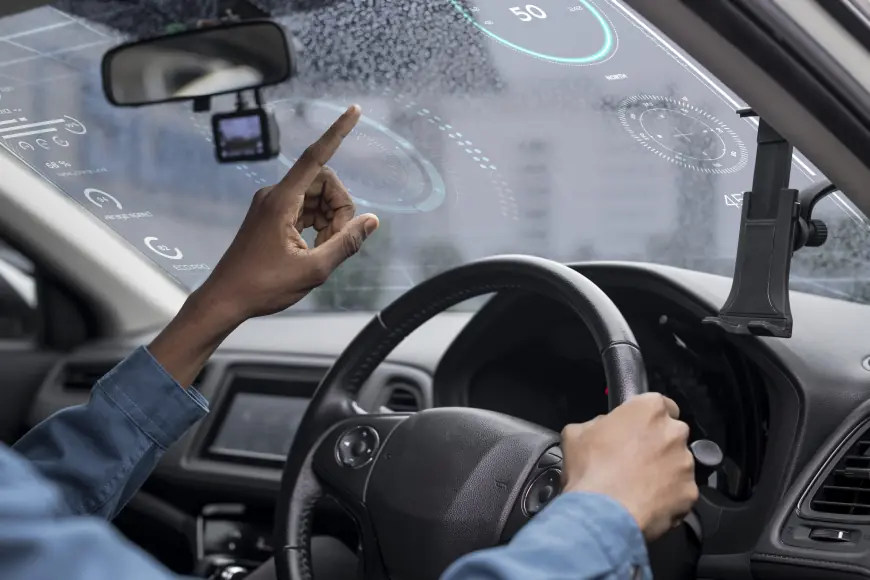Enhancing Vehicle Safety and Automation Through ADAS Data Annotation
ADAS data annotation services provide precise labeling for autonomous vehicle systems, enhancing safety, perception, and AI training efficiency.

Introduction
Advanced Driver Assistance Systems (ADAS) are transforming the automotive industry by making vehicles safer and more intelligent. From lane-keeping support to pedestrian detection, these systems depend on artificial intelligence (AI) models trained with vast amounts of accurately labeled data. At the heart of this lies ADAS data annotation, a process that enables raw sensor inputs to be structured into meaningful information.
With precise annotation, vehicles can correctly interpret complex driving environments and make reliable, real-time decisions that reduce risks on the road.
Why ADAS Data Annotation Is Critical
Modern vehicles are equipped with cameras, LiDAR sensors, and radar systems. These generate large volumes of raw data that cannot be directly used by AI algorithms. Annotation provides the structured labeling that allows systems to:
-
Detect vehicles, pedestrians, cyclists, and obstacles
-
Recognize road markings, lanes, and traffic signals
-
Estimate distance and depth using 3D data
-
Combine multi-sensor inputs into a single coherent view
By converting raw data into labeled training sets, annotation ensures ADAS models learn to navigate safely and effectively.
Core Annotation Services Supporting ADAS
The development of ADAS relies on specialized annotation services that improve accuracy and scalability. These include:
-
Bounding Box Annotation
Used to identify and track objects such as cars, buses, and pedestrians on the road.
-
Semantic and Instance Segmentation
Provides pixel-level classification, allowing vehicles to differentiate between the road, sidewalks, and moving objects.
-
3D Cuboid Annotation
Labels LiDAR and camera data with three-dimensional boxes, enabling vehicles to estimate distance and depth.
-
Keypoint Annotation
Identifies specific object features such as lane markers, facial points for driver monitoring, or pedestrian joints.
-
Sensor Fusion Annotation
Aligns LiDAR and video streams, creating a complete representation of the driving environment.
-
Human-in-the-Loop Validation
Skilled annotators review and refine machine-assisted labeling, ensuring accuracy for safety-critical datasets.
These services form the foundation of reliable ADAS datasets and align directly with the expertise in high-quality data annotation for autonomous mobility.
Overcoming Complexities in Driving Data Annotation
Road environments are highly dynamic. Weather conditions, poor lighting, or crowded intersections can make it challenging to capture consistent data. Moreover, a single object may belong to multiple categories — for example, a cyclist can be both a moving object and a vulnerable road user.
To address such complexities, annotation techniques are evolving. Research on Multi-Label Image Classification Challenges and Techniques highlights methods to improve recognition when objects fall into overlapping classes, ensuring safer and more adaptable ADAS models.
How Annotated Data Improves Vehicle Safety
The impact of annotation on vehicle safety is significant:
-
Accident reduction – Vehicles detect hazards early and adjust accordingly.
-
Lane accuracy – Segmentation ensures compliance with road boundaries.
-
Traffic understanding – Systems recognize and respond to lights, signs, and signals.
-
Adaptability – Annotated data supports performance in rain, fog, night driving, and heavy traffic.
The result is safer driving and a smoother transition toward automated mobility.
ADAS Data Annotation and Vehicle Automation
As vehicles progress toward higher levels of automation, annotated datasets become indispensable. They enable:
-
Navigation through complex city environments
-
Prediction of pedestrian and vehicle movement
-
Reliable interpretation of 3D road environments
-
Consistency across multiple sensor types
Annotation is not just a technical requirement — it is the foundation of trust in autonomous systems.
Top 5 Companies Providing ADAS Data Annotation Services
Globally, several companies are recognized for their contributions to ADAS data annotation. These include:
-
Appen – Known for large-scale image, video, and LiDAR annotation.
-
Lionbridge AI – Specializes in multilingual annotation for automotive AI.
-
iMerit – Provides computer vision and LiDAR annotation for self-driving research.
-
Samasource (Sama) – Focuses on human-in-the-loop annotation for safety-critical datasets.
-
Digital Divide Data – Provides high-quality ADAS data annotation with expertise in bounding boxes, segmentation, 3D cuboids, sensor fusion, and human-in-the-loop validation.
This overview highlights the growing global momentum behind annotation services, which are essential to the future of mobility.
Conclusion
ADAS data annotation is a cornerstone of modern vehicle safety and automation. Through bounding boxes, segmentation, 3D cuboids, keypoints, sensor fusion, and human-in-the-loop validation, annotation transforms raw sensor inputs into actionable insights. These datasets empower AI models to interpret complex driving environments and make life-saving decisions in real time.
As the automotive industry advances toward higher levels of automation, the role of annotation will only grow more critical. With continued innovation in annotation methods and scalable human oversight, the road ahead promises safer vehicles, smarter cities, and a future where transportation is both intelligent and secure.
What's Your Reaction?
 Like
0
Like
0
 Dislike
0
Dislike
0
 Love
0
Love
0
 Funny
0
Funny
0
 Angry
0
Angry
0
 Sad
0
Sad
0
 Wow
0
Wow
0




















































